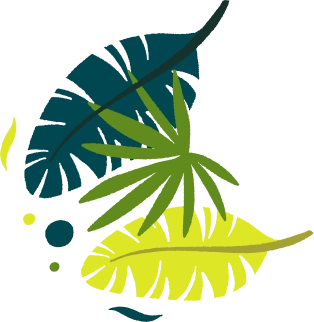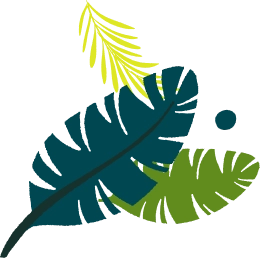


Riding north from Ha Giang to Cao Bang is one of Vietnam’s great adventures. I started from Ha Giang City at dawn and immediately felt the thrill - winding highways through terraced fields and limestone peaks.
The first stretch (QL34) follows the Gam River valley, passing lush rice paddies and jungle-clad slopes. By the time I reached Bao Lam or Du Gia, the scenery was already breathtaking.
Route options: you can choose the classic northern loop (Ha Giang → Đồng Văn → Mèo Vạc → Bảo Lạc → Cao Bang, ~360 km), a border-hugging route (adding Pac Bó Cave just south of Cao Bang), or a southern route via Ba Bể Lake (QL34 → DT176 to Đa Vi → Ba Bể → Cho Ra → Na Phắc → QL3 to Cao Bang).
In good weather all are doable - QL34 and QL3 are mostly paved, but DT176 between Bao Lac and Đa Vi is narrow and can get very muddy or blocked after rain.
(We even hit one washed-out patch around Đa Vi.) Google Maps shows ~5-6 hours ride time, but realistically plan two days to savour stops - Ha Giang to Cao Bang direct is long (buses do it in ~6-7h).
Key sights (“hidden gems”) en route:
Lung Cu Flag Tower: An early stop past Đồng Văn, this flagpole marks Vietnam’s northern tip. Climb its high platform for proud panoramas and nearby H’mong villages.
Dong Van - Meo Vạc: The old town market in Dong Van is a cool ethnic spot, and the road to Mèo Vạc (QS level town) crosses the legendary Ma Pi Leng Pass, a sheer gorge road above the Nho Que River. Don’t miss Pao’s House in Lung Cam village (film location) or a bustling local market in Meo Vac.
Ma Pi Leng Pass
Ma Pi Leng Pass: Riding this stretch from Đồng Văn down to Mèo Vạc is jaw-dropping - steep cliffs and sweeping river views everywhere. We stopped at the new Ma Pi Leng Skywalk for photos (but careful: it’s slippery!).
Khau Coc Cha Pass (Cao Bang): This little-known pass north of Bảo Lạc cuts through karsts above rice terraces. We wound its twisties with barely another vehicle in sight. It feels like a slice of heaven for riders.
Pac Bo Cave: If you take the border road DT208 south of Cao Bang city (Route 2), a short turn north leads to this historic cave where Ho Chi Minh lived. It’s well signposted; turn north on DT208 about 40km out of Bao Lạc to reach it. Very atmospheric and free to enter.
Pac Bo Cave Is a Must Visit Place on Your Ha Giang Itinerary
Ba Be Lake (optional detour): On the southern route you’ll swing past Vietnam’s largest natural lake. The still waters and Karst rings are gorgeous. We took a quick boat tour (and swam off the dock) near Cho Ra village before heading east to Cao Bang.
Ban Gioc Waterfall: Undoubtedly the star sight of Cao Bang. This massive border cascade is shared with China (Detian Falls on the other side).
Timings & Fees: Open daily (roughly 7:00-18:00 in summer, shorter winter hours). Entrance is 45,000 VND per adult (children <1m free), motorbike parking 10,000 VND.
Raft rides up to the falls (highly recommended for close-up views) are ~50,000 VND/person. We spent 2-3 hours scrambling on the rocks and even walked out on rafts (getting soaked!).
Ban Gioc is at its best in the rainy season (May-Sept) when the flow is full - in the dry season it’s tamer but still scenic (it’s “gentle” but not underwhelming).
It has over 10,000 google reviews with an average rating of 4.6 stars so I guess it's quite worth it!
Ban Gioc Waterfall Seems Unreal at Times
Nguom Ngao Cave: Just 3 km from Ban Giốc (on your way back to Cao Bang), this limestone cave complex is impressive. We turned up without reservation and paid 45,000 VND at the booth.
Inside are huge chambers with stalagmites and stalactites everywhere - we loved exploring the lit corridors. For the adventurous, a deeper trek with a guide is offered (extra ~200,000 VND for about 1 km deeper), though we skipped it.
Nguom Ngao Cave
Phia Oac - Phia Den NP: If you have extra days, detour 70 km north of Cao Bang to this highland park (Nguyên Bình district). The summit of Phia Oac (1,931m) is snow-capped in winter and covered in misty pine/moss forests.
The park is off-the-beaten-path but offers cool temperatures and “otherworldly” mountain scenery. We did a short hike under towering white-flowered trees and felt like we’d stepped into a fairy tale.
Dong Van Bar Hotel Falls on the Ha Giang Loop
Food, coffee & homestays: Northern cuisine is a delight after long rides. In Cao Bang I tried the local specialties: bánh trứng kiến (ant-egg rice cake) and Cao Bang-style bánh cuốn (rice rolls served in a sweet bone broth instead of fish sauce).
Also sample grilled Cao Bang catfish or thang hen (snail stew) if you spot it at a market. Along the route we’d often pull into friendly roadside spots serving pho, fried noodles, or sticky rice dishes.
For coffee breaks, two spots stood out: Dong Van Bar (a rustic hilltop café on Mã Pí Lèng Pass) and Heaven Gate Coffee at the Quan Ba Pass (1,500m high) - both have incredible views (even simple iced coffee feels gourmet there).
Accommodation was mostly family-run homestays. We stayed in simple wooden bungalows or stilt houses run by Tay and H’mong families. They fed us communal dinners of rice, stir-fries and soup and even performed local folk songs in the evenings.
In Ba Bể we slept right by the lake in a jungle hut; near Ban Giốc we bunked in Khuổi Ky village (northern Tay highlanders). You don’t need fancy hotels - authentic homestays are half the fun.
Rainy-season mud on DT176 near Đa Vi village. This quiet backroad from Bảo Lạc to Đa Vi (and on to Ba Bể) is narrow and unlit; in dry weather it’s passable for any good bike, but after even light rain it fills with ruts, landslides and ankle-deep mud.
We were lucky with fair skies, but one afternoon clouds rolled in and we watched others patch a washout with wooden planks. In general, QL roads are paved but often bumpy with potholes - expect slow speeds.
Vietnam has ~40 million bikes and petrol stations are everywhere… fill up once a day. I topped off daily in Ha Giang, Dong Van, Meo Vac, Bao Lac or Cao Bang. Still, carry an extra liter in a bottle if venturing deep off-grid.
a Rest Stop on the Ha Giang Loop Late Evening
Riding gear is a must. Mornings in the mountains can be chilly (especially Oct-Feb), while midday sun or humidity (May-Aug) is sweltering - pack layers and rain protection. Helmets are required by law (and for good reason). We rode only by daylight: after 6 pm the roads got pitch black.
Always check weather: during monsoon season (May-Oct) roads like DT176 or the Ma Pi Leng bends become slick or blocked.
Safety first: Go easy on those curves and never go faster than you’re confident. Travelers often warn that even a small crash up here is dangerous - someone I met along the way grimly noted that if you “get into an accident in the north… ambulance/getting help could be hours away”.
It happens: riders have suffered broken limbs (or worse) far from cell coverage. So, drive with caution, stay hydrated, and carry a basic first-aid kit. Check your bike’s brakes and tires before setting out, and consider renting a durable 150cc+ bike (Honda XRs and CB150s work well on dirt).
If two wheels scare you, there are other ways to make this trip. Public buses run daily from Ha Giang to Cao Bang (about 6-7 hours, fares roughly 100,000-150,000 VND). The bus station in Ha Giang sells tickets; departures are usually early morning. (Keep in mind the road is twisty and mountainous, so it’s a bumpy ride.)
You can also arrange a private car/van through local travel agents for door-to-door convenience. In Ha Giang or Đồng Văn you’ll find plenty of motorbike tour operators offering guided “Easy Rider” packages (6-7 day loops covering Ha Giang/Cao Bang).
These include bike rental, gear, driver, lodging and guide - pricey but stress-free. For backpackers, the cheapest is self-rental: shops in Ha Giang or even Hanoi have 150cc-250cc bikes; check that it comes with a full tank.
Many shops include a Vietnamese helmet and raincoat.
Last tip: when returning, some travelers bus Hanoi → Cao Bang → Ha Giang the other way around, but I liked heading north to Cao Bang then looping back west to Ha Giang via Ba Bể.
Is the road from Ha Giang to Cao Bang safe for motorbikes?
Yes, but with caution. The highways (QL3, QL4C, QL34) are generally paved, but they wind through mountains, so expect narrow lanes, sharp turns and sudden changes. In dry season it’s very doable; in wet season beware of slick patches or landslides.
Always wear protective gear. As one rider warned, accidents here can be serious because help could be hours away - so go slow, don’t cut corners, and avoid alcohol. Riding experience is recommended.
Can I do Ha Giang to Cao Bang in one day?
You could if you’re super keen. It’s roughly 250-300 km of tough roads. Google estimates ~5-6 hours of riding, but that’s non-stop ideal time.
Realistically, once you stop for views/food, it’s safer and more fun to split into 2 days. For example, you might stay overnight in Mèo Vạc or Bảo Lạc. (If you do it in one go, leave before sunrise - and expect a late dinner!)
What’s the best time to ride this route?
Late autumn and winter (Oct-Feb) have cool, dry weather - roads are less dusty but mornings can be cold. Spring (Mar-May) is pleasant but check for occasional rain.
Summer (Jun-Sept) is hot and wet: Ban Giốc is fullest then, but some passes may get misty or muddy. Worst time is peak monsoon (late summer) when storms can wash out roads. We visited in November and found crisp air and clear skies.
How much are Ban Gioc and Nguom Ngao admissions?
Ban Giốc entry is 45,000 VND per adult. (Children under 1.3m get a small discount.) Raft rides cost ~50,000-100,000 VND extra.
Nguom Ngao Cave is 45,000 VND to enter. Guided “deep tours” are optional (+200,000 VND) but not necessary unless you want spelunking. Boats, mats and other services at Ban Giốc (horse photos, etc.) have nominal fees.
Where can I fuel up or stay along the way?
Major towns (Ha Giang, Đồng Văn, Bảo Lạc, Cao Bang) have proper petrol stations and guesthouses. In between, many village shops sell gasoline by the liter; it’s always wise to fill up at big towns first. We found fuel every 60-80 km easily.
For lodging, try friendly homestays: popular choices include Du Gia River Lodge, Bá Lạc inns, lakeside lodges at Ba Bể, or the guesthouses around Ban Giốc (e.g. Khuổi Ky homestay). Hotel options in Cao Bang city are also cheap. Reservations aren’t usually needed off-season, but do book early around holidays.
Get the latest information about our tours and special offers!